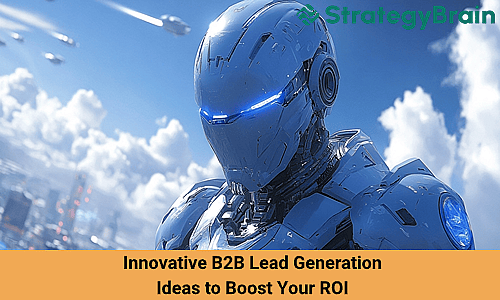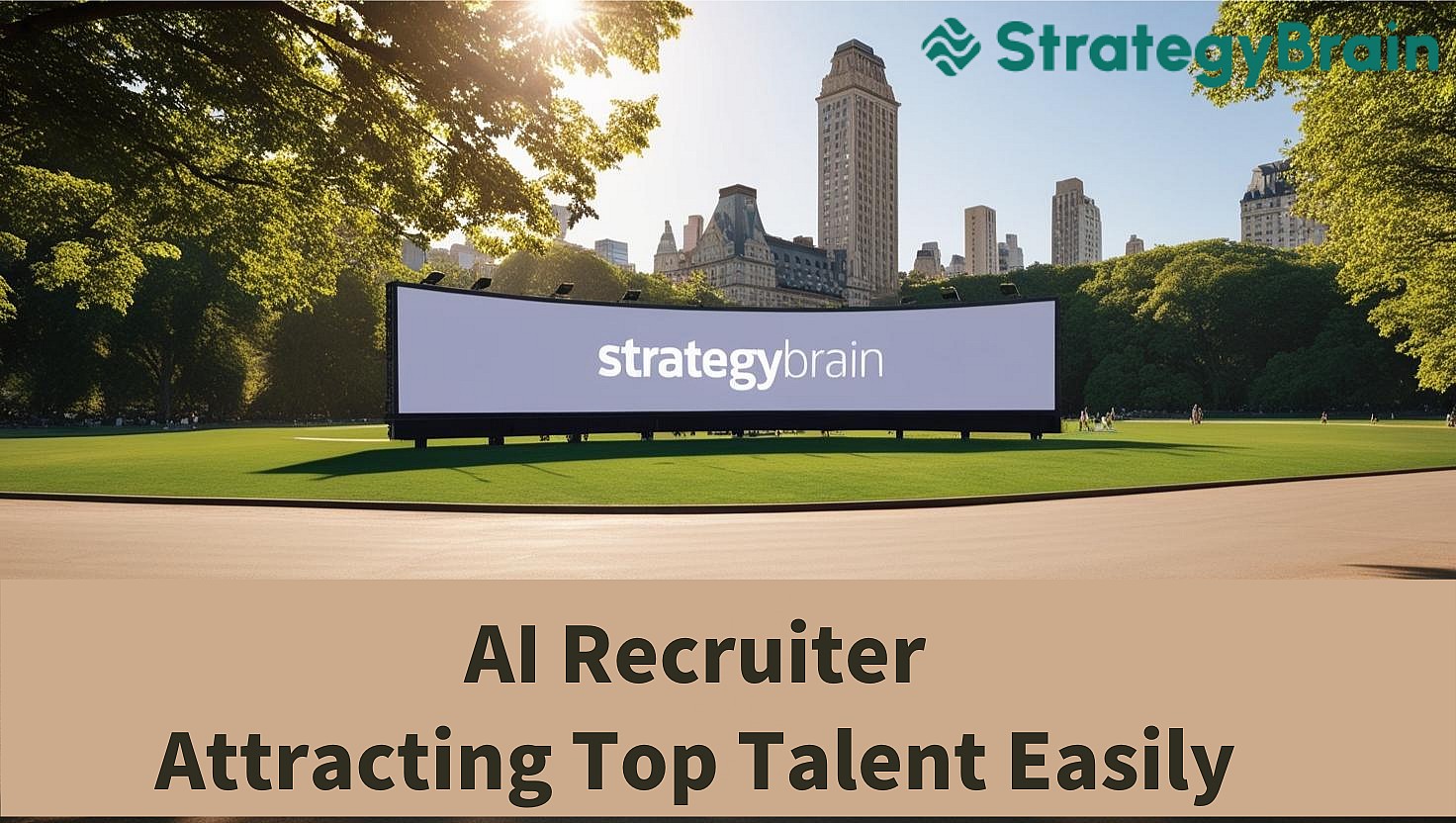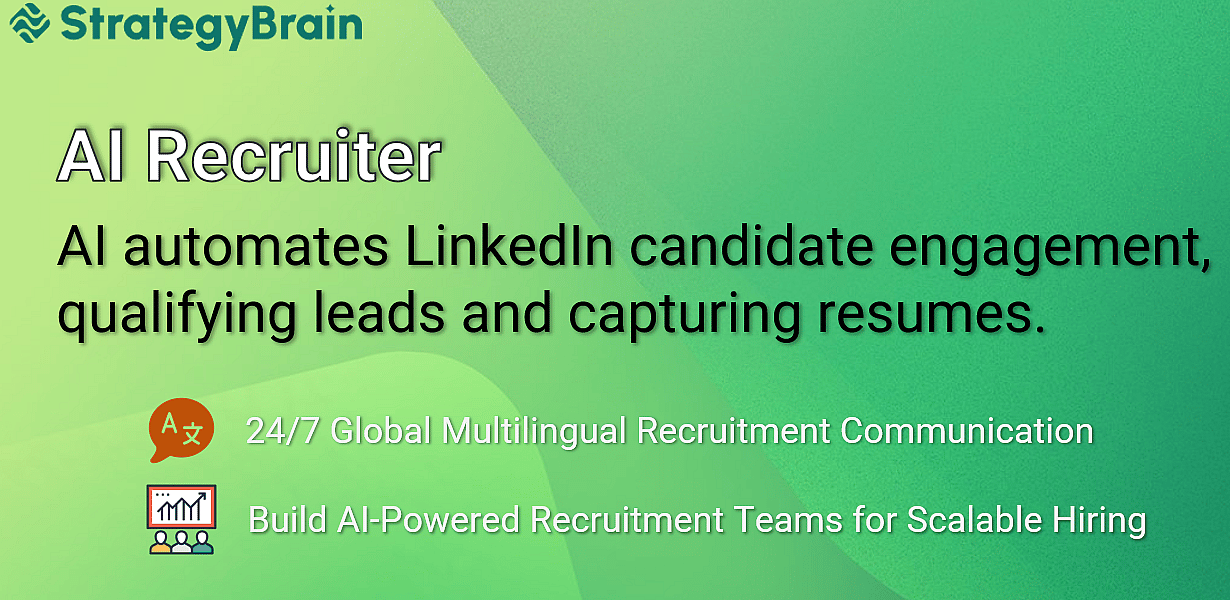
In the competitive world of B2B marketing, generating quality leads is like striking gold. For marketing leaders, the demand for effective lead generation strategies is more pressing than ever. Especially as 34% of marketers and sales professionals are prioritizing leads above all else in 2024. But what does it take to not only attract leads but also ensure a high return on investment? This post aims to unravel the ultimate guide to lead generation pricing, strategies, and methods that maximize your ROI. We’ll cover lead generation pricing models and factors that affect lead costs. Then, we’ll share effective B2B lead generation ideas to boost your business.
One of the first steps in mastering lead generation is understanding how to price your efforts. There are several models you can use, each offering unique insights into costs and potential ROI. Let’s explore these in more detail.
In lead generation, three pricing models are used: cost per lead (CPL), cost per acquisition (CPA), and subscription-based. Cost Per Lead (CPL)focuses on the cost of generating each lead.It lets you allocate your budget based on lead quality and volume. Cost Per Acquisition (CPA)goes further. It considers the whole process of acquiring customers. This gives a better view of your investment. Lastly, Subscription-Based Pricing charges a recurring fee for ongoing access to leads. It delivers a steady stream of potential clients. Each model caters to different business needs and goals. It’s crucial to pick the one that best aligns with your company’s strategic objectives. These models help with financial planning. They also aid in creating better lead generation strategies that are efficient and effective.Cost Per Lead (CPL)
The Cost Per Lead model is a straightforward approach where you pay a fixed amount for each lead generated. This model gives a detailed view of costs and ROI. To find the cost per lead, divide your lead generation spend by the number of acquired leads. For example, if you spend $4,000 and acquire 55 leads, your CPL would be $72.72.
CPL has an advantage: it is transparent. It clearly outlines the costs of acquiring individual leads. However, it’s important to remember that what constitutes a lead can vary between channels and sales pipelines.
CPL and Cost Per Acquisition both track the costs of setting up appointments or getting valuable leads. An “appointment” is a meeting with a lead that fits your Ideal Customer Profile (ICP). This metric also shows lead quality, as appointments usually involve more advanced leads.
While the costs might be higher with CPA, the value of these leads often justifies the investment. Calculating your CPA involves dividing the total cost by the number of appointments secured.
Buying bulk data is another way to boost sales. You get large contact databases, skipping traditional marketing. This gives you a ready list of potential leads.
Bulk data pricing depends on the source and the method of acquisition. This includes buying from brokers, using public databases, or developing first-party data. This approach offers cost stability, as you pay for the data upfront.However, pricing can vary based on your needs and sources.
For businesses outsourcing lead generation, a retainer-based agency can be a good option. Unlike pay-per-lead models, retainers have predictable monthly costs. But, they offer no control over lead quantity or quality. This model provides a consistent budget. But, it requires trust in the agency to deliver quality leads that meet your goals.
The retainer model requires your business and the agency to align strategically. Clearly define expectations and performance metrics to match lead generation goals. Regular communication and performance reviews are essential. This helps adapt strategies to changing needs and market conditions. Choose an agency with a strong track record and industry expertise for better results. This work can boost lead quality and quantity over time. Factors Affecting Lead Generation Prices. Knowing what impacts lead generation costs is key. It helps set realistic goals and boosts returns. Now, let’s look at these factors.
When considering lead generation costs, several factors are key. First, lead quality matters. High-quality leads need better targeting, raising costs. The channel used also impacts pricing. For instance, social media and email marketing vary in cost and efficiency. Competition in your industry is another factor. High competition drives up costs, as you need to spend more to stand out. The campaign size is also crucial. Larger campaigns can lower costs per lead. In contrast, niche campaigns are pricier due to their specific targeting. By understanding these factors, businesses can better plan their strategies. This helps balance spending with the expected quality and quantity of leads. Industry-Specific Considerations
Lead prices differ across industries due to competition, sales cycles, and regulations. High competition raises lead costs. Similarly, B2B tech’s complex sales cycles also affect pricing. Also, data privacy rules may limit available info, raising lead gen costs.
Data privacy rules are now stricter, impacting how businesses find leads. These rules govern data collection, storage, and use. They also require compliance with laws like the EU’s GDPR and California’s CCPA. Meeting these laws raises costs. Companies need secure data systems and must follow legal guidelines. Getting consent from potential leads demands transparency and careful communication. This can slow down sales and make leads harder to reach. So, businesses must update their lead strategies to meet these rules. This ensures they stay legal and build trust with potential customers.
Lead generation methods also affect pricing. Inbound marketing, like content creation and SEO, is cost-effective but slow to deliver results. Meanwhile, outbound methods, such as cold calling and email marketing, require more effort. However, they often produce higher-quality leads. Paid ads, including PPC, are targeted but costly. They need careful audience segmentation to be effective.
The quality of leads generated directly impacts ROI. High-quality leads that convert into paying customers offer better returns on investment. Conversely, low conversion rates can drive up costs and reduce profitability. Tracking lead quality and conversion rates is vital for optimizing lead generation strategies.
After exploring lead generation pricing, it’s key to adopt tactics that fit your budget. Personalized marketing is vital. It allows marketers to match content to potential leads’ needs. Using data analytics further enhances this approach, improving lead quality. Incorporating AI and automation makes targeting and nurturing leads easier. These advanced tactics boost ROI and foster lasting client relationships. This ensures success in competitive markets.Geographic Factors Continued
Understanding geographic differences is key for lead generation in various regions. Factors like competition, market maturity, and cultural differences matter. These aspects influence how leads respond to marketing. Customizing messages and tactics to local preferences boosts lead quality and conversion rates. Additionally, laws and regulations differ by region. This requires specific compliance strategies. International businesses must be vigilant to stay compliant and seize opportunities. Hence, a localized approach, using regional insights, enhances lead generation and reduces costs.
Operational costs like salaries, resources, and development contribute to lead generation expenses. Efficiently managing these costs while keeping lead quality is crucial for maximizing ROI.
Businesses should adopt strategies to manage costs effectively. First, they can use technology and automation to reduce manual work and boost efficiency. Outsourcing tasks also saves money, allowing focus on revenue activities. Regularly reviewing processes helps find inefficiencies and savings. Training staff with the latest skills increases productivity and reduces costly errors. By optimizing these aspects, businesses balance costs and quality. This leads to better returns over time.Business Profit Goals
Ultimately, understanding the profitability of your lead generation efforts is vital. Ensure your target market can support your revenue goals. This allows your business to grow sustainably without sacrificing profit margins.
Setting clear profit goals is vital for lead generation. First, analyze the market’s ability to support your revenue. Then, use research and data to align efforts with achievable goals, ensuring growth. Regularly check market conditions to adapt strategies. Focus on profit margins to maintain efficiency and lead quality. As markets change, adjust your approach to balance profitability with lead generation investments. This is key to staying competitive.
Let’s explore a few examples of lead generation companies and their unique pricing models.
StrategyBrain is a top provider of AI sales solutions, focusing on outbound lead generation. Its platform features automation tools, a large B2B contact database, and AI insights to boost sales. Pricing is tiered, allowing businesses to tailor their strategies. Services include outbound lead generation, data enrichment, and unique sales playbooks.
Incorporating intelligent automation into your lead generation strategy greatly maximizes efficiency and effectiveness. These automated systems can prospect globally, 24/7. They communicate in any language and operate without human intervention. They also adapt culturally to engage diverse audiences. Automated outreach boosts engagement. It eliminates cookie-cutter templates. It focuses on key topics that match your sales funnel. It ensures timely, relevant follow-ups to advance the sales process.
AI-driven personalization boosts lead quality by analyzing prospects deeply. It connects their roles, companies, and industries to your product. Moreover, it understands their intent and communication styles. This technology builds trust by identifying client problems. It enables responses that are both intuitive and empathetic. These responses address challenges and offer solutions. Ongoing talks adapt to clients’ needs. They show product knowledge with tailored info, quick details, and relevant case studies.
You can scale outreach without extra resources by creating a virtual sales team. This team ensures a consistent brand voice worldwide. It supports affordable growth. This allows for market testing and optimizing sales resources without hiring more staff. Focusing on high-intent prospects and using automated tools can significantly boost lead generation. This approach keeps costs low.
We’ve looked at lead generation pricing and cost factors. Now, let’s focus on B2B lead generation ideas to boost your ROI.
To boost ROI in B2B lead generation, use varied and creative strategies that match your goals and audience. Start with digital marketing, like content creation and SEO, to attract leads. Offer valuable content that interests your audience. This builds trust and positions you as a leader. Also, use social media for targeted campaigns that encourage interaction and sharing. Data analytics tools are key. They provide insights into customer behavior and campaign success. This helps in making necessary adjustments. Networking at events and partnering with similar businesses can also bring in leads. Always test and refine your methods to improve lead quality and conversion rates. This ensures a better ROI from lead generation.
Utilize a mix of inbound and outbound lead generation methods to maximize your reach and engagement. By diversifying your approaches, you can capture more leads. For example, combine content marketing with cold email outreach. This will help you reach different segments of your target audience.
Also, focus on adopting advanced technologies to boost lead generation. Tools like chatbots and AI can improve efficiency by automating tasks and providing instant support. Also, industry-specific CRMs help manage relationships and tailor interactions. This boosts conversion rates. Adopting tech trends shows your business is innovative and flexible. Also, using various strategies with modern tech boosts lead gen ROI and competitiveness.
Stay updated on the latest lead generation best practices to ensure your strategies remain effective. Regularly review and refine your processes to align with changing market trends. Leverage automation tools to streamline repetitive tasks and enhance lead tracking capabilities.
To boost lead generation, start with market research. Understand your audience’s needs and behaviors. This helps craft targeted messages and offers. Set clear goals and track them with KPIs. This way, you can spot improvements and scale successful strategies. Keep your data clean and updated. This avoids wasting resources on bad leads. Segment your lists for personalized communication. This increases engagement. Ensure marketing and sales teams work together. This smooths the transition of leads. Foster a culture of learning and adapting. This keeps your organization responsive and improves lead generation.
Focus on lead quality by targeting those who match your Ideal Customer Profile. Use data to find promising leads. Tailor your messages to their specific problems. This method boosts conversion chances and maximizes ROI.
Focus on quality, not just numbers. Invest in tools for precise targeting and engagement. Use predictive analytics to spot likely leads. Create detailed buyer personas to understand ideal clients. Tailor content to address their challenges and goals. Build relationships with regular contact and care. Seek feedback and adjust your approach. This shows you value their needs, boosting trust. Aiming for quality leads to better connections and growth, increasing ROI.
Use social media to engage potential leads. Share valuable content, join discussions, and run ads to expand your reach. LinkedIn is crucial for B2B leads, connecting you with decision-makers and leaders. Simply being present on social media isn’t enough. Develop a strong strategy. Create relevant content that solves problems and shows your expertise. Join groups and discussions to add value and become a thought leader. This builds real connections with leads seeking solutions. Use targeted ads to reach the right audience. This ensures your message hits likely prospects. LinkedIn offers tools like InMail and analytics to boost lead conversion. A strategic approach on social media turns connections into growth-driving relationships.
In today’s market, B2B companies need good lead generation for high returns. First, understand pricing models and factors affecting costs. Then, use creative ideas to boost leads. Always aim for quality leads. Mix your methods. Also, tap into social media to improve your strategies.
To learn about B2B lead generation, connect with experts and access insights. The right strategies and tools can help you achieve your business goals.
In closing, we’ve explored B2B lead generation strategies. Now, let’s highlight the AI Sales Rep. It can boost your sales process. Our AI Sales Rep enhances efficiency through smart automation. It’s active 24/7, allowing global prospecting. It communicates in any language and adapts to cultural differences. With automated outreach, you engage prospects personally. This avoids static templates, ensuring meaningful interactions.
Our solution uses AI to personalize and improve lead quality. It analyzes prospects’ roles, companies, and industries. Moreover, it assesses their intent and communication styles. This approach builds trust by identifying pain points. It allows for empathetic messaging and guidance in conversations, effectively addressing client challenges.
Scaling your outreach has never been easier. AI Sales Rep lets you create a virtual sales team.It will unify the brand voice across multiple accounts, without extra staff costs. This allows for cheap growth and better use of sales resources.
Why choose AI Sales Rep over other tools? Our platform has a competitive edge. It has fully automated processes, AI messages, and a low price. For $9.9 a month, businesses can use AI to boost their LinkedIn prospecting. With a complimentary 10-day trial, we’re confident you’ll see the transformative power of AI Sales Rep in driving your B2B sales forward.
AI plays a crucial role in enhancing B2B lead generation tactics by providing data-driven insights and automating key processes. It helps identify the most effective channels and messages for reaching target audiences, ensuring that marketing efforts are both efficient and impactful. AI also supports continuous improvement by offering actionable feedback on tactics and strategies.
AI supports personalized lead outreach by analyzing data to create customized messages for each prospect. It considers factors such as past interactions, industry trends, and individual preferences, ensuring that communications are relevant and engaging. This personalized approach builds stronger relationships with leads, increasing the likelihood of conversion.
AI Sales automation offers several advantages in lead generation strategies, including increased efficiency, accuracy, and scalability. Automated systems handle repetitive tasks such as data entry and lead scoring, reducing human error and allowing sales teams to focus on more complex activities. AI also provides real-time insights, enabling quick adjustments to strategies for optimal results.
Yes, AI-driven marketing supports B2B sales lead generation by providing detailed insights into customer behavior and preferences. This allows businesses to create highly targeted marketing campaigns that resonate with their audience. AI can also automate various marketing tasks, freeing up resources to focus on strategic decision-making and customer engagement.
AI Sales strategies align with B2B lead generation best practices by automating and optimizing key processes such as lead scoring, nurturing, and follow-ups. These strategies ensure that marketing efforts are data-driven and targeted, improving efficiency and effectiveness. AI also supports continuous improvement by offering insights that help refine best practices over time.
AI impacts global market engagement by enabling businesses to tailor their marketing strategies to diverse audiences across different regions. AI tools can analyze cultural preferences and trends, allowing for more effective localization of content. This helps businesses engage with a wider audience, increase brand awareness, and capture leads in multiple markets.
AI enhances lead quality by using sophisticated algorithms to filter and prioritize leads based on various criteria, such as engagement history and demographic information. It continuously learns from data inputs, refining its criteria to ensure only high-quality leads are pursued. This focused approach results in a higher conversion rate and better ROI.
AI in sales prospecting improves lead generation efforts by automating the identification and qualification of potential leads. It uses predictive analytics to assess lead quality and prioritize efforts, ensuring that sales teams focus on the most promising prospects. AI also enhances data accuracy, reducing time spent on manual prospecting and increasing overall efficiency.
AI Sales tools facilitate efficient lead nurturing by automating follow-up tasks and providing personalized content recommendations. These tools track lead interactions across multiple channels, ensuring that each touchpoint is meaningful and contributes to moving the lead through the sales funnel. This targeted approach helps maintain engagement and builds trust over time.
AI streamlines sales conversion optimization by analyzing data to identify patterns and predict outcomes. It provides real-time insights into which strategies are working and where improvements are needed. AI tools can simulate different scenarios, helping businesses refine their approaches to maximize conversion rates and enhance ROI.


